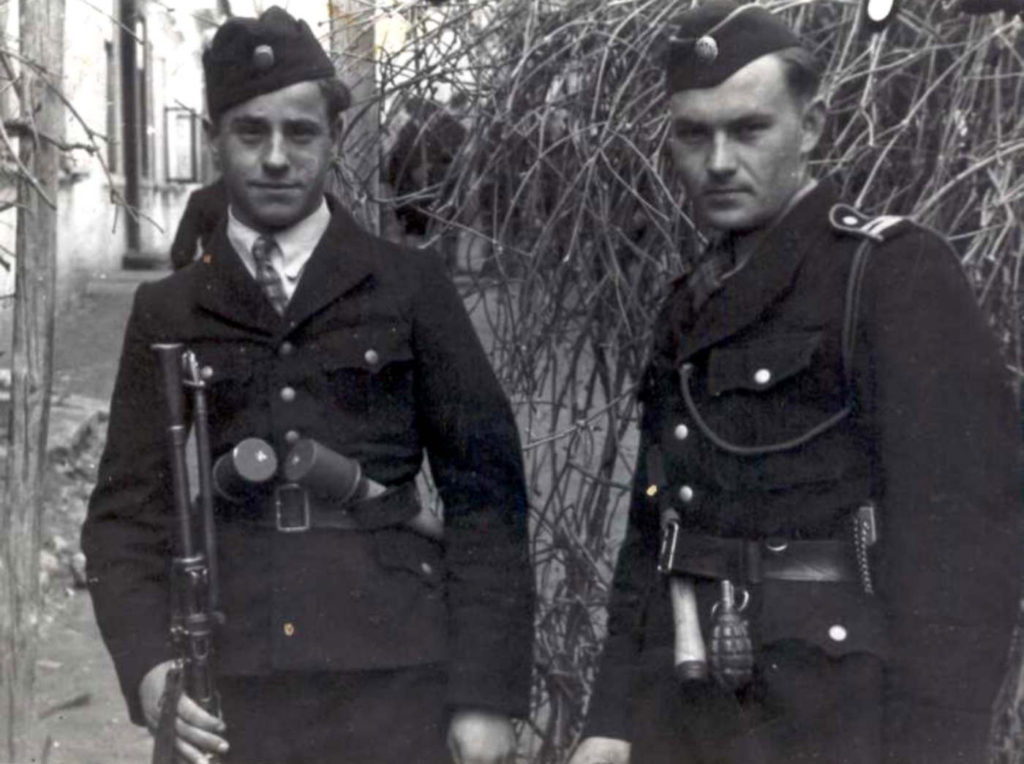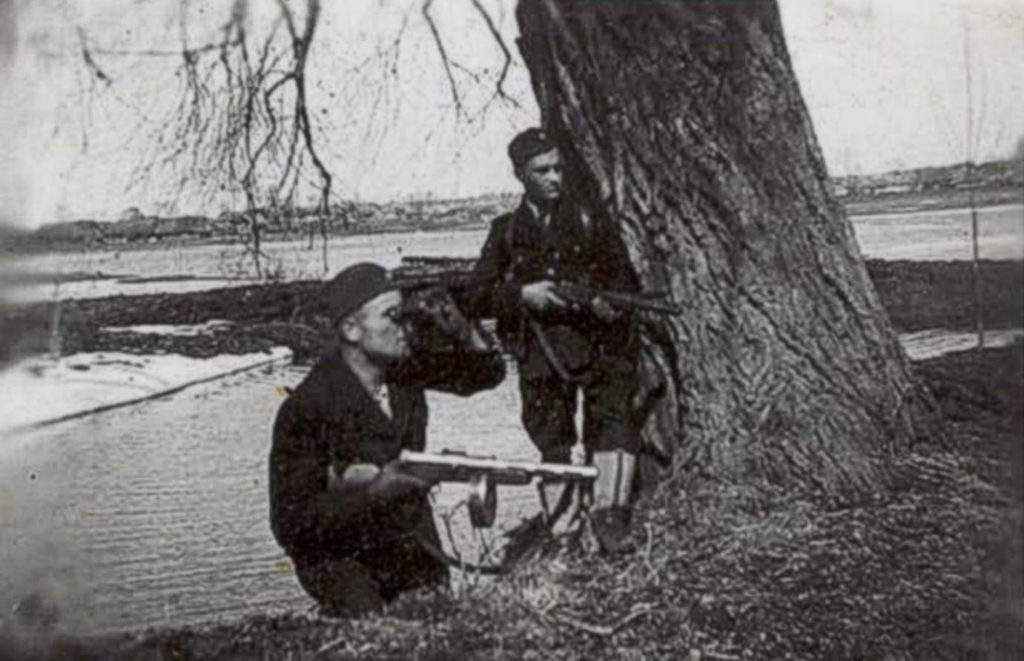
The Ukrainian Insurgent Army (UPA)
In 1941–42, Bul’ba Borovets had formed a non-political unit of resistance fighters which eventually became known as the Poliis’ka Sich. Borovets belonged to nobody but himself and his country. His fight was against the Red Army and he had gathered enough people to make an impression on both the Nazis and Mel’nyk, where the OUN leader’s popularity was strong.
Most of those who fought with Borovets were also supporters of Mel’nyk. However, as the tides of war turned, so did feelings toward how the nation would be run. The leaders and followers of the OUN-B formed a guerrilla group of about 200,000 men and women and renamed themselves the UPA.
Many of those who later joined UPA were conscripts or kidnapped members of the OUN-M who had been attacked and disarmed by OUN-B cells.
The UPA’s goal was to rid Ukraine of all its totalitarian armies and outside influences. That included Jews and Poles. Founded in 1942, UPA gained control of most of the forested and mountainous areas in western and northern rural Ukraine. General Roman Shukhevich, who was the Commander-in-Chief of the army and Chairman of the Ukrainian Supreme Liberation Council (UHVR) in 1944, led the continued guerrilla warfare against the USSR. He was killed in action in 1950.
Ukrainian Division Galicia
In World War II, although the Soviet and Red Army had 4.5 million Ukrainians (of which between 1.5 and 2 million were killed), there were no complete Ukrainian units. The Ukrainian Front Armies were, however, heavily Ukrainian. As the tide turned against Germany, there was a decision to establish Waffen SS units of Eastern Europeans which were regular military units distinct from the German SS. On April 28, 1943, a “volunteer” Division Galicia (Diviziya Halychynna) was established.
Professor Davies: “Thanks to persistent wartime prejudices, many British and Americans still harbor the illusion that most Ukrainians spent the war either as auxiliaries in the concentration camps or in the Waffen-SS Galizien…[but] the Waffen SS recruited three times as many Dutchmen as Ukrainians.”
The initiative for the Division’s establishment came from the Governor of Galicia, Dr. Otto Wächter, who had the support of the Ukrainian Central Committee, which was the only legal representative of Ukrainians during the German occupation. Its formation was to induce the Ukrainians to closer collaboration with the Germans. The Ukrainians, in turn, saw in the creation of such a Division the first nucleus of a future Ukrainian Army, which at the war’s end could play a decisive role in the restoration of a Ukrainian Independent State.

As Germany felt growing pressure on its armies it agreed to the establishment of the Galicia Division, renamed the First Ukrainian Division at the end of the war in April 1945. The Galicia Division was trained in late 1943 and early 1944 and was designated to fight only against the USSR, not the other Allied forces. About 40,000 Ukrainians were enlisted and, under German officers in the higher echelons, the Division was sent to fight the Battle of Brody, July 13–22, 1944, where it was encircled and largely destroyed by the Soviet Army. There were only about 3000 survivors but the Division was later increased to about 20,000 with new recruits. Some of those “recruits” were members of the Ukrainian Self-Defense Legion, which was then stationed in Slovakia.
Eventually the Ukrainian National Army (including the Division) were surrendered to the Allies in Austria by General Pavlo Shandruk and interned in Rimini, Italy. A Soviet three-month investigation in Rimini found no war criminals. It was then transferred to England and finally members emigrated to Canada, the USA and Australia, among other countries. The British and Canadian authorities carefully reviewed the Galicia Division and the Diviznyky. On March 12, 1987, after an intensive investigation by the Canadian government, the Hon. Justice Jules Deschenes completely exonerated the Galicia Division from any war crimes.
What reviewers are saying




